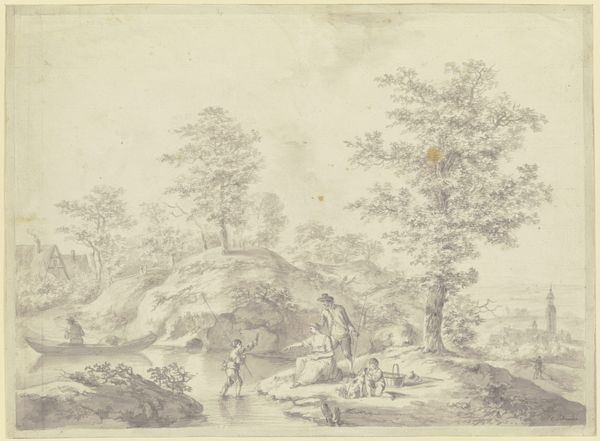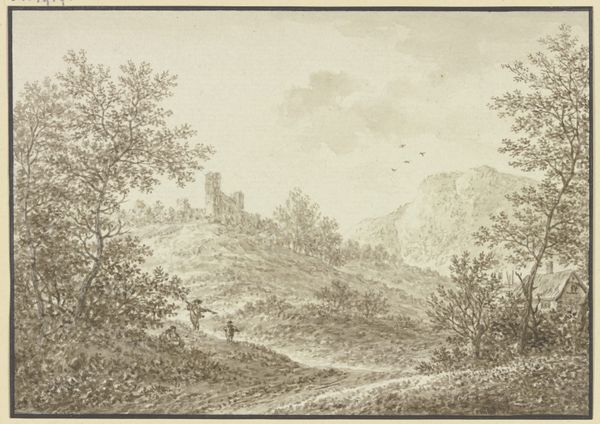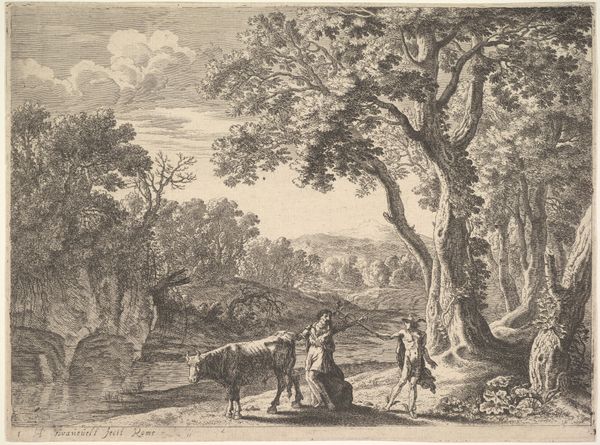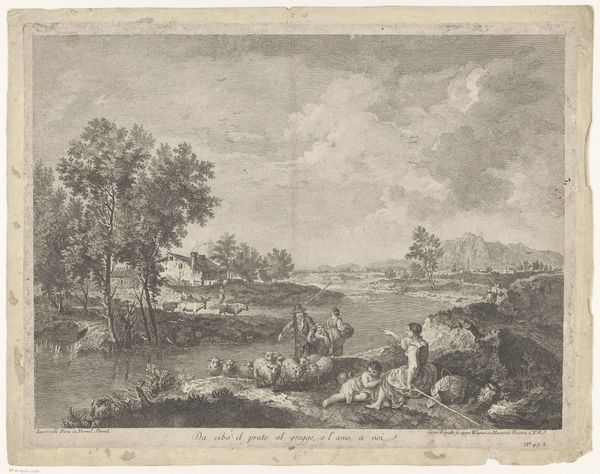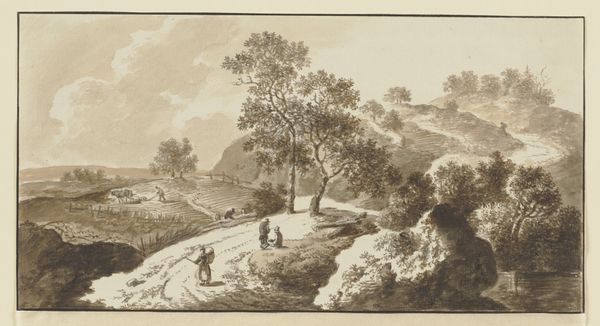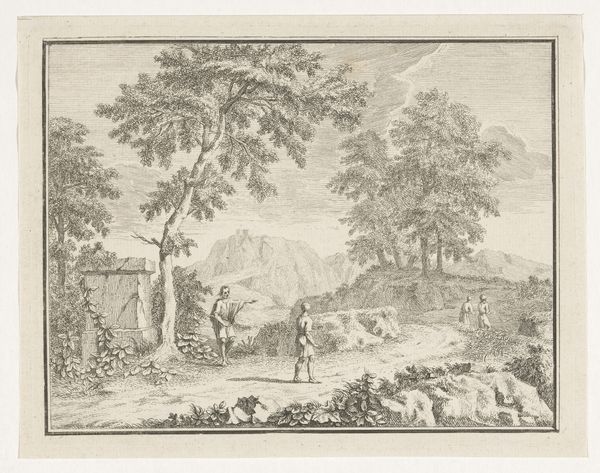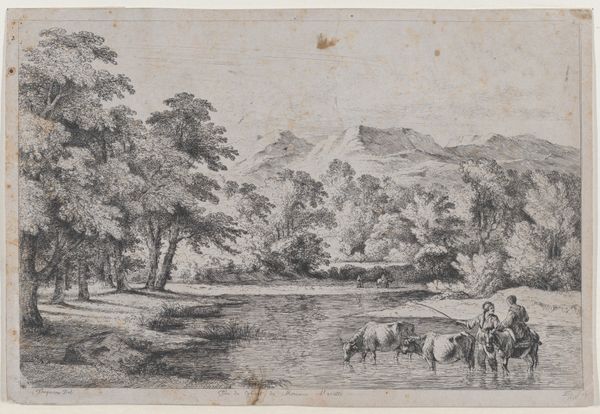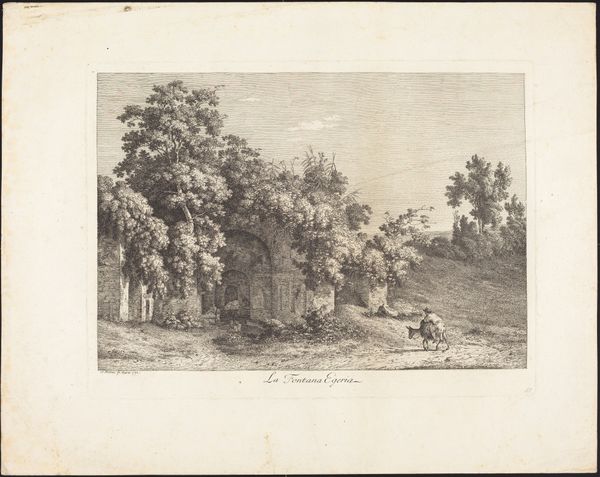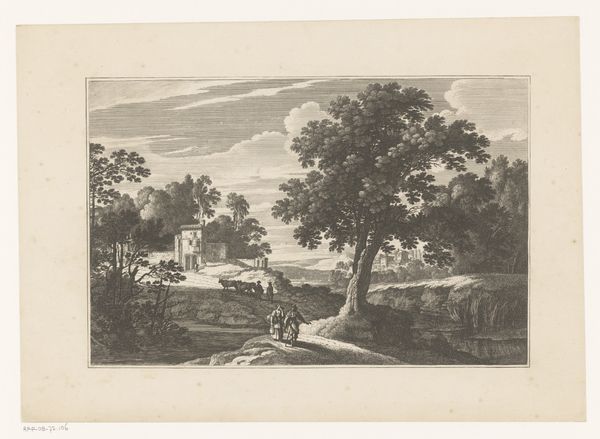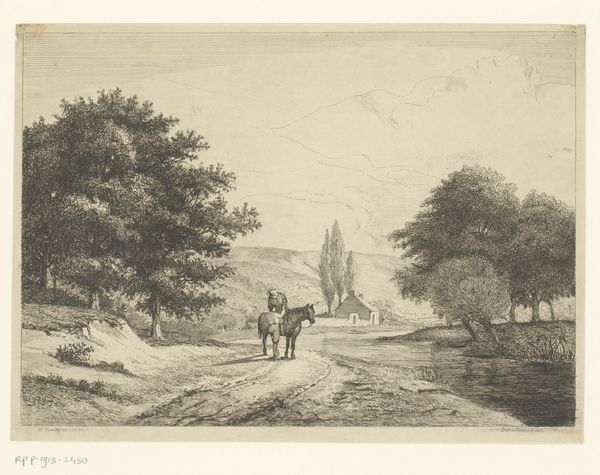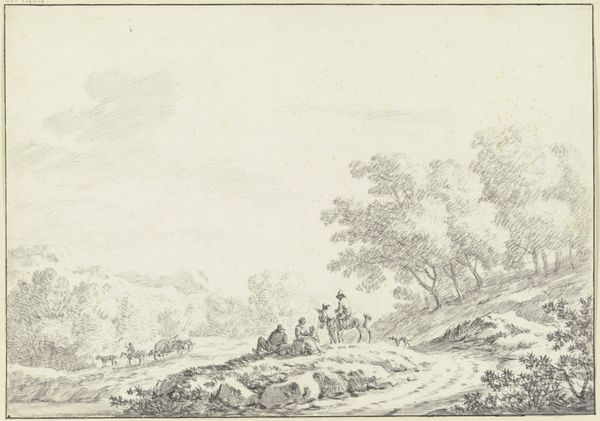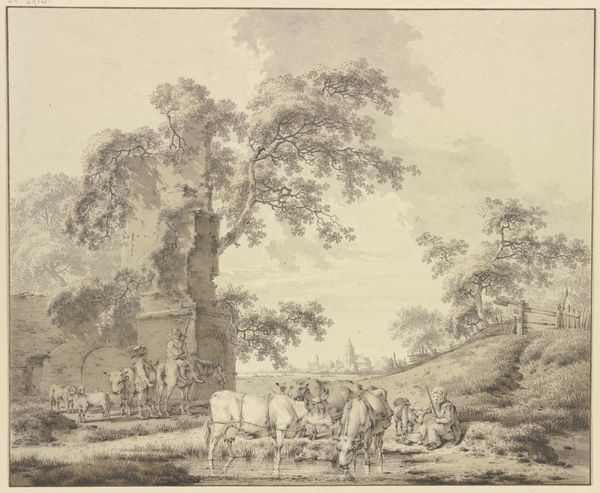
Classical Landscape with Hunters in the Foreground 1755 - 1821
0:00
0:00
drawing, pencil
#
drawing
#
neoclacissism
#
landscape
#
figuration
#
pencil drawing
#
geometric
#
pencil
Dimensions: 13-9/16 x 19-5/16 in. (34.5 x 49.0 cm) (overall) 32.4 x 46.7 cm. (the drawing, excluding the border)
Copyright: Public Domain
Curator: Here we have Giovanni Battista Lusieri's "Classical Landscape with Hunters in the Foreground," believed to have been created sometime between 1755 and 1821. It's a pencil drawing currently held at the Metropolitan Museum of Art. Editor: The immediate feeling is one of tranquility. There’s a subdued atmosphere to the drawing, even with the figures populating the scene. The composition draws your eye deep into the receding planes. Curator: Indeed. Lusieri's mastery lies in his detailed use of line and perspective to create depth and aerial perspective. The architecture, softened by distance, is a hallmark of neoclassical landscapes, harkening back to idealised notions of the ancient world. Editor: I’m struck by how the material reality shifts the emphasis. Pencil is such an accessible, everyday tool. To see it used to evoke this vision of classical idealism points to the ready availability of artistic practices to reflect and possibly critique dominant cultural ideals. Curator: An interesting counterpoint. The restrained monochrome palette heightens the emphasis on form. Note the precision and deliberation. It's a testament to the artist's skillful hand and formal training, prioritizing idealized composition over realism. Editor: While you rightly point to form, consider how landscape served both as a site of aristocratic leisure, evident in the figures dotted through the composition and a terrain of agricultural labor. Look at the goatherds, the laden donkeys, which speaks to economic activities within a highly ordered composition. Curator: I concede the laborers add a certain element of earthly pragmatism. The scene blends the beautiful with a vision of pastoral simplicity, inviting contemplation and escape. It's not just about a visual record but a calculated arrangement, which is an important reminder to focus on composition above context. Editor: Perhaps, but those materials ground us. They tell a story about the culture that facilitated the vision and give us a crucial access point, so we can understand a broader system of production and the material conditions which supported the artist himself. Curator: Ultimately, the dialogue is invaluable for understanding its various nuances. It provides us a unique perspective into our world. Editor: Absolutely, both in what is highlighted and how it functions as more than just visual pleasure, offering a mirror to our present preoccupations and methods of valuing artworks.
Comments
No comments
Be the first to comment and join the conversation on the ultimate creative platform.
